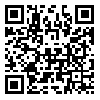BibTeX | RIS | EndNote | Medlars | ProCite | Reference Manager | RefWorks
Send citation to:
URL: http://mjiri.iums.ac.ir/article-1-3683-en.html
Background: Scientometric studies are highly important, as they provide information about scientific products worldwide and empower scientists to compare research activities in different regions. The present study was conducted to map scientific research in diabetes mellitus using scientometric analysis in Middle Eastern countries during 2003- 2007.
Methods: This was an analytical study with a scientometric approach. The study population was formed by the indexed scientific results of diabetes mellitus in the Web of Science database during 2007-2013. Data were analyzed using Excel, and HistCite to map the scientific texts.
Results: A total of 6532 records were retrieved from 3926 institutions. These records belonged to 19 323 authors and were published in 1420 journals.
The Journal of Diabetes Care, with 3928 citations, had the most global citation score (GCS). The Journal of Diabetes Research and Clinical Practice, with 185 citations, achieved the first degree of local citation score (LCS). Most of the scientific documents produced in the Middle East belonged to Turkey (31.91%) and Iran (21.7%). Seven scientific clusters based on LCS, and 5 based on GCS existed in the scientific mapping. Topical clusters based on global and local indices showed that the prevalence of diabetes, hyperglycemia, and pregnancy outcomes, diabetic risk factors, diabetic complications and their new treatments, and glucose monitoring in Type 1 diabetes were the fields being addressed in the main articles of the clusters.
Conclusion: Scientific production and local and global citations in diabetes research in Iran (21.7% of diabetes research in the Middle East) have elevated the country to a prominent position. Top ranking countries in diabetic research were Turkey, Iran, and Israel, respectively. Moreover, this paper quantified the studies that were done on different aspects of diabetes. The results of this study can be used by health care providers to employ the best multidisciplinary approach for managing diabetes and its complications. Also, the results can help the policy-makers and governments to determine the priorities for budget allocation based on the burden of diseases. Establishing a regional diabetes network in the Middle East can be beneficial and lead to scientific collaboration and an increase in scientific production in this field.
| Rights and permissions | |
 |
This work is licensed under a Creative Commons Attribution-NonCommercial 4.0 International License. |








